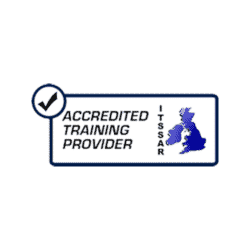How to complete the D2 & D4 forms
If you are looking to complete the D2 application form and D4 Medical form, our short, helpful video below will guide you through each section of the form and should answer any questions you have about the forms in question.
D2 Provisional Licence Application Explained
What is a D2 form?
The D2 provisional licence application form must be completed to get the entitlement to drive the vehicle of your choice as a learner.
Students completing the D2 provisional licence application form tend to require a Cat C1, Cat D1, Cat C or Cat C+E provisional licence.

What is a D2 Provisional Licence Application?
One of the first steps into gaining your licence includes completing your driver medical and obtaining your provisional LGV licence. To gain your provisional licence, you will need to complete a D2 application form.
applying for and obtaining your LGV provisional licence, will allow you to begin your practical driver training.
Visit the government website for more info on gaining your provisional LGV licence.
D4 Medical Forms Explained
What is a D4 form?
In order to operate any kind of LGV or heavy machinery, the individual must be deemed safe medically to do so. This includes things like eyesight, heart problems and sleep disorders. You must be fit enough to pass the drivers medical. Driving heavy goods vehicles (HGV) can be a demanding job, so you need to be fully assessed. You don’t have to be in amazing physical health – simply reasonably healthy and safe behind the wheel.

What does the medical entail?
All drivers must undergo the HGV medical from a qualified physician. You must take a new medical when your license is due for renewal, to ensure nothing has changed. Your medical examination will also be booked local to you.
The medical will begin with a series of questions, which you must answer honestly. This will include existing conditions and mental health. Next, you will have a physical exam, which measures such things as eyesight. As a driver, your vision is of vital importance. HGV drivers must be able to read a number plate from 20 meters. You can still pass the exam if you need glasses or contact lenses so just ensure you’re honest with the doctor and take them to the test, as you would when you drive.
If you are currently on any medication, ensure you bring it with you to show the doctor. It’s vital they know about any existing medical conditions.
Completing your Medical & Gaining your Provisional Licence
In order to complete your LGV driver medical, you will need to bring a D4 medical form with you to your medical, where the doctor or practitioner will help you fill this form out.
Your medical could last for around 15 minutes and can include:
- Eyesight test.
- Blood pressure test.
- Completing basic health questions.
The team here at 2 Start will help you every step of the way on your journey, which includes arranging and booking your medical for you. You will then need to send your D2 & D4 forms to the DVLA along with your photocard driving licence.
You also need to apply and obtain your LGV provisional licence, which will allow you to begin your practical driver training.
Visit the government website for more info on gaining your provisional LGV licence.
Once you have passed your medical, submitted your D2 & D4 forms to the DVLA and received your provisional LGV licence back from the DVLA, you will be ready to complete your theory training and tests.
- D4 Medical
- D2 Provisional
To operate any kind of Large Goods Vehicle (LGV) or heavy machinery, you must be deemed safe to do so. This includes checking for visual impairments, heart problems and sleep disorders.
Driving a Heavy Goods Vehicle (HGV) can be a demanding job. This is why you must be fully assessed. You don’t have to be the pinnacle of good physical health – simply reasonably healthy and safe behind the wheel.
When you need to complete a D4 Form
There are several reasons for needing to complete a D4 form and medical assessment. These factors include:
- If this is your first application.
- You are applying to renew your medical.
- When you are over 45 years, you must complete a D4 medical every 5 years.
- Once you are 65, a D4 medical must be completed annually.
- If you are applying for your provisional, but your previous D4 was not submitted in the las 12 months.
Where to get a D4 medical form
You can download a copy of the D4 medical form from the government website. 2 Start also supply you with the D4 medical form when booking on any one of our courses that require you to complete a medical.
When booking onto a driver training course, the advisors will ask if you have already completed the required D4 medical form (as well as the D2 provisional licence form).
If you have already completed this step of the process, then you must provide the proper certification which stipulates that you are allowed to train for the given vehicle category. Otherwise, you will be required to complete the form(s) again if these cannot be supplied.
How to fill out the form
The D4 medical form is colour coded.
The grey sections are filled out by the participant (in this case, you). This will include you adding your personal information, such as:
- Full name
- Date of birth
- Full address
- Postcode
- Contact number
- Email address
- Date first licenced to drive a bus or lorry (if applicable)
- GP’s name
- GP’s practice address
- GP’s practice postcode
- GP’s contact number
- GP’s email address
The green sections are for the medical professionals who are conducting the examination.
Page 8 of the form is the applicant’s declaration. You must make sure that you have read this, checking off the according boxes relevant to you.
You must also ensure that all relevant sections on your D4 medical form is filled out. If you do not fill out all the required sections, your form will be sent back to you until fully completed. This should also include your name and date of birth on the bottom of each page which applicants tend to sometimes miss.
2 Start have created a useful short video on how to complete your D2 & D4 forms.
What to take with you to your medical assessment
When you are attending your medical, you must make sure that you bring the following:
- D4 Medical Form
- Identification (Valid driving license or passport)
- Driving glasses (Bring any glasses you may wear for driving. If you wear, contact lenses you must remove these before the examination)
- Optical prescription (If you wear glasses for driving you must also bring your optical prescription so our doctor can record the strength of your lenses – ask your optician for this)
- Details of medications you may be taking (If you take any medications regularly, we need the names, dosages and start date – this is important)
You can see the governments useful leaflet that covers some of the key things to consider for your medical assessment for more details if required.
Medical exam process
All drivers must undergo the medical exam from a qualified physician. You must retake this exam when your license is due for renewal.
Reasoning for this is because your physical health could potentially deteriorate over a period of time without knowing. These medical changes can be detrimental in the logistics industry. This is why it is vital that you are up to date with all medical ailments, additional medication and any other medical diagnosis’ that have only been deduced after your previous examination.
Questioning
The exam will begin with a series of questions, which you must answer as honestly as you can. This will include existing conditions and mental health.
Don’t be concerned about being honest, as the physician is there to identify any compounding issues which could result in an incident.
Not only this, but the physician is not allowed to forward on any of your personal information, so this is confidential.
The acting physician will also look at your medical history, physical and mental health, and wellbeing.
Physical
Next, you will have the physical exam. This will include eyesight testing.
Additional checks in the physical will also include ensuring the patient has no drug or alcohol misuse. The examiner will also look at blood pressure, and any ailments which could affect driving standards.
Vision Assessment
As a driver, your vision is of upmost importance. It is a DVSA standard that all HGV drivers must be able to read a number plate from 20 yards.
The Driving Eyesight Rules on the government website explain that “You must have a visual acuity of at least 0.8 (6/7.5) measured on the Snellen scale in your best eye and at least 0.1 (6/60) on the Snellen scale in the other eye.”
You can still pass the exam if you need glasses or contact lenses so just ensure you’re honest with the doctor and take them to the test, as you would when you drive.
It should be mentioned that your doctor may not be able to answer all questions on the vision assessment. This is because they may not be qualified to do so. If this is the case, you must find your local optician or optometrist, who will be able to assist you.
Neurological Disorders
What if you have been diagnosed with epilepsy?
If you are someone who has been diagnosed with the condition, you must not have any kind of seizure (without taking anti-epilepsy medication) for 10 years.
Furthering this, if you have a medical condition which may increase your accountability towards seizures (this includes a head injury which is deemed serious) you must have a risk factor no greater than 2% annually prior to your application.
There are also additional suggestions you must consider in relation to eligibility, such as:
- A stroke in the last 12 months.
- Unexplained loss of consciousness, with potential recurrence.
- Any disabling dizziness or vertigo in the past 12 months, with potential recurrence.
- Major brain surgery or a recent severe head injury, causing serious continuous after-effects, or a likelihood of seizures.
- Any chronic neurological disorders with symptoms that are likely to affect “safe driving” (such as Parkinson’s disease)
If you are currently on any medication, you must bring it with you to show the doctor. They must know about any existing medical conditions. It is also suggested to note the length of time you have been on certain medication for, and if you have had any side effects (either stipulated on the medication or not).
Overwhelming for most, if you have full adequate knowledge of your prescriptions, there should be no arising problems that you may not be aware of (permitting you have regular check-ups and ensure you are fit and healthy).
Your Licence
Once you’ve got your medical certificate, it will be valid for four months. For those renewing an existing licence, expect to receive it within three weeks of sending your form off to the DVLA.
Once the D4 medical form and examination is complete (and hopefully successfully) you can then move to obtaining your provisional licence.
At 2 Start training, we are leading suppliers of HGV training in the south, we provide booking of the medical examination on your behalf (depending on the course chosen).
We have helped many learners broaden their horizons and achieve their goals. Our team support all students who are in the first steps of becoming a logistical driver.
The medical may be one of the most disconcerting steps, as you will have a doctor, GP optician etc, determining if you are fit to drive a larger vehicle. However, it is important to reassure trainers, students, and drivers that you are meeting the criteria to safely drive an HGV/LGV category of vehicle on our roads.
Courses that require medical and provisional forms
2 Start offer a selection of training which required the D2 Provisional and D4 Medical forms:
- Car to C+E
- Class 1 HGV
- Class 2 HGV
- D1 Minibus
- D1+E Minibus
- Cat C1
- Cat C1+E
Once your medical form has been completed, it is time for you to move to filling out and submitting your D2 provisional licence form.
Depending on the provisional category you require, you may get additional entitlements for other licence categories.
| Category Chosen | Provisional entitlement |
| C1 | C1 |
| C or C1+E | C1, C1+E, C and C+E |
| D1 or D | D1, D1+E, D and D+E |
What to complete on the application
The first part of the form you will most likely complete is stating the licence provision you are applying for. This will be the training you will also be completing. For example, if you are planning to complete the fast track car to C+E, you will want to put C+E as your provision.
You will also need to fill out your details, such as your name, address and date of birth.
Underneath the “your details” section is the eyesight and hearing section. In this part, you must state if you can meet the legal eyesight standard for driving. Also, you must state whether you need to wear glasses or contact lenses when driving. After this, you must answer the field asking if you are deaf.
There is also an additional field underneath relating to organ donors. This section is only optional, so you completing that this field is not mandatory.
Your Health
Another section that you must complete will be considering your health and/or medical history. You must place an “x” in any box in which you have that medical condition.
If you have never suffered from any of the medical conditions on the list, you can place an “x” above in the top section, next to “no.”
Proof of Identity
This section is somewhat self-explanatory. As you are requiring a provisional licence entitlement, you will need to send off your driving licence along with the application. This will be your proof of identity.
Furthering this, underneath this section is also a “Signing a photo to verify identity” block. This too can be ignored, as the DVLA will have you proof of identity details via your licence, as well as already being on the system.
Declaration
Once all sections have been properly filled out to meet your requirements, you will need to complete the declaration. This includes inserting the date of submitting your application.
You must also place your signature in the white box below. You must make sure that your signature stays in the white box, and does not overlap into the green frame. Otherwise, your application will be rejected.
Once all parts of the form have been successfully completed, you will need to send this, along with your drivers licence, and the D4 medical, which should already be completed.
If you are unsure of the provisional entitlement you require, or any other parts of the form, you can call our team on 02392 123 555.
How Long Does This Take?
Depending on your medical output, your provisional licence will be with you within three weeks from sending off the provisional form.
If you have any factors from your D4 medical which need reviewing, then your provisional entitlement may take longer. This is because the DVLA must ensure that you are safe to drive and do not have any medical condition, or taking any medication, which could affect your driving capability.
Once you have obtained your licence back with the provisional entitlement, you can begin your training.










